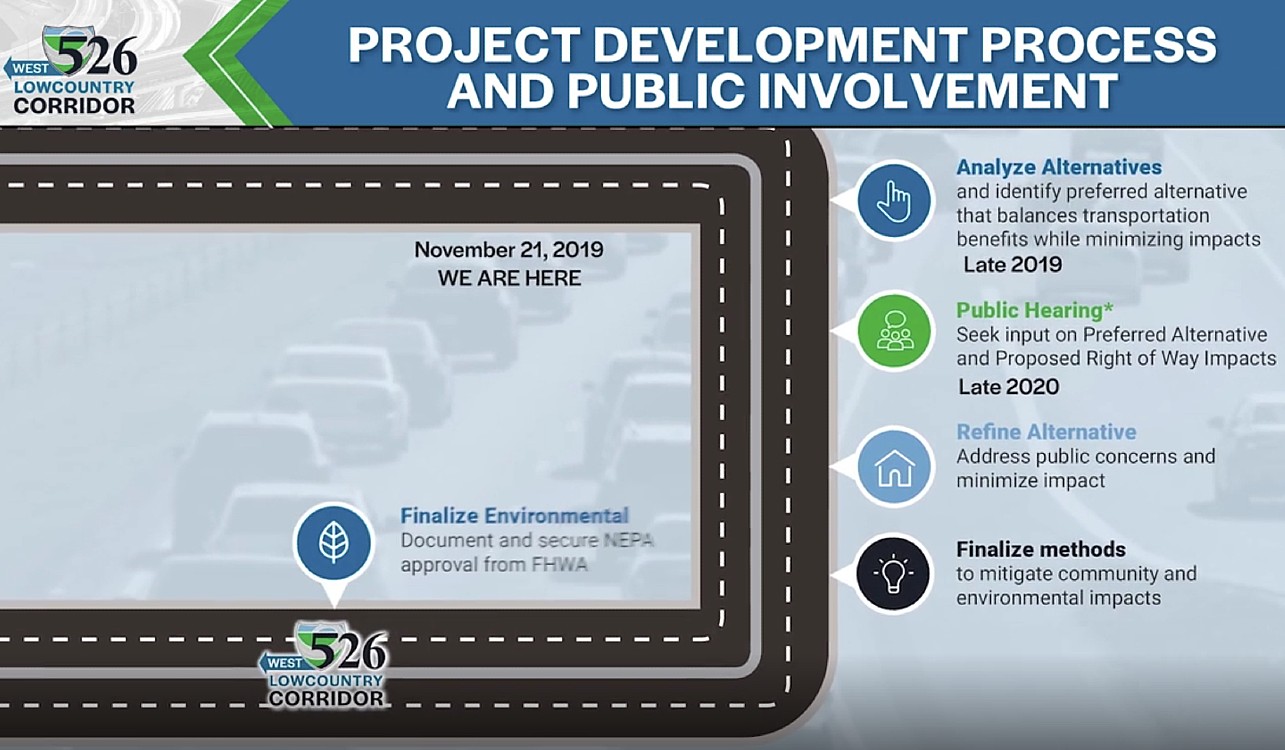By Fred Palm, contributing editor | The S.C. Department of Transportation (SCDOT) proposes to widen Interstate 526 and redo the Interstate 26 intersection. This will be a massive redo of a major travel vector. The cost: at least $1.1 billion. The I-526 Corridor Analysis shows minor shifts in congestion or capacity improvement. The SCDOT website is open to the end of January for our comments.
- Click here to take part in the SCDOT virtual public meeting and share your voice.
 SCDOT builds highways and wants us to focus on the four alternative highway routes. We are putting down our future regional investments and growth. Highway investment drives other future investments. Businesses use interstate distribution of their goods that grows our economy. Build it and they will come or follow. In a similar vein, railroad spines drove our country’s western development.
SCDOT builds highways and wants us to focus on the four alternative highway routes. We are putting down our future regional investments and growth. Highway investment drives other future investments. Businesses use interstate distribution of their goods that grows our economy. Build it and they will come or follow. In a similar vein, railroad spines drove our country’s western development.
Transportation, flooding and economic factors drive the following decisions: Where homes get put; where business expands; and how long the commute follows. These are supporting, opposing, or conflicting factors.
In the Lowcountry, we are in a bigger, regional gridlock. The SCDOT I-526 four widening choices give modest relief. Recent flood events have affected our business sector. Flooding is a looming threat to our economic future. The fix for flooding from the governing municipal bodies and counties is unspoken. Lack of definition and/or a lack of realistic funding hampers flood plans. Also, development policies are on hold. Approved projects use nuisance flooding mitigation as the flood protection standard. That protection is uneven across many municipalities. Development policies await expression to contain flooding, forestalling future flood buyouts. This is what a regional level crisis looks like.
The proposed I-526 investment sets the region’s strategic direction. We need a passing grade on this three-pronged test:
- Get high marks on transportation efficacy,
- Flood risk reduction, and
- Economic long-term viability.
Justify the $1.1 billion investment that drives our future. Failure on any prong means we prefer the No Highway Build.
We cannot build our way out of gridlock. SCDOT must rethink the approach. Redefine the mission here to people movers. We need alternative ways of moving people to get out of gridlock. More concrete means more congestion. Our decision-makers have to come to terms with the pressing regional questions.
Inaction on any of these three significant factors moves us quickly to the sidelined existential questions, place by place. We are betting our region of these decisions. Bet wisely.
Fred Palm of Edisto Island is a retired professor of oversight and investigations at the John Jay College School of Public Management and a former executive director of the Association of Inspectors General. He writes about the Common Good.
- Have a comment? Send to: editor@charlestoncurrents.com




 We Can Do Better, South Carolina!
We Can Do Better, South Carolina!

























2 Comments